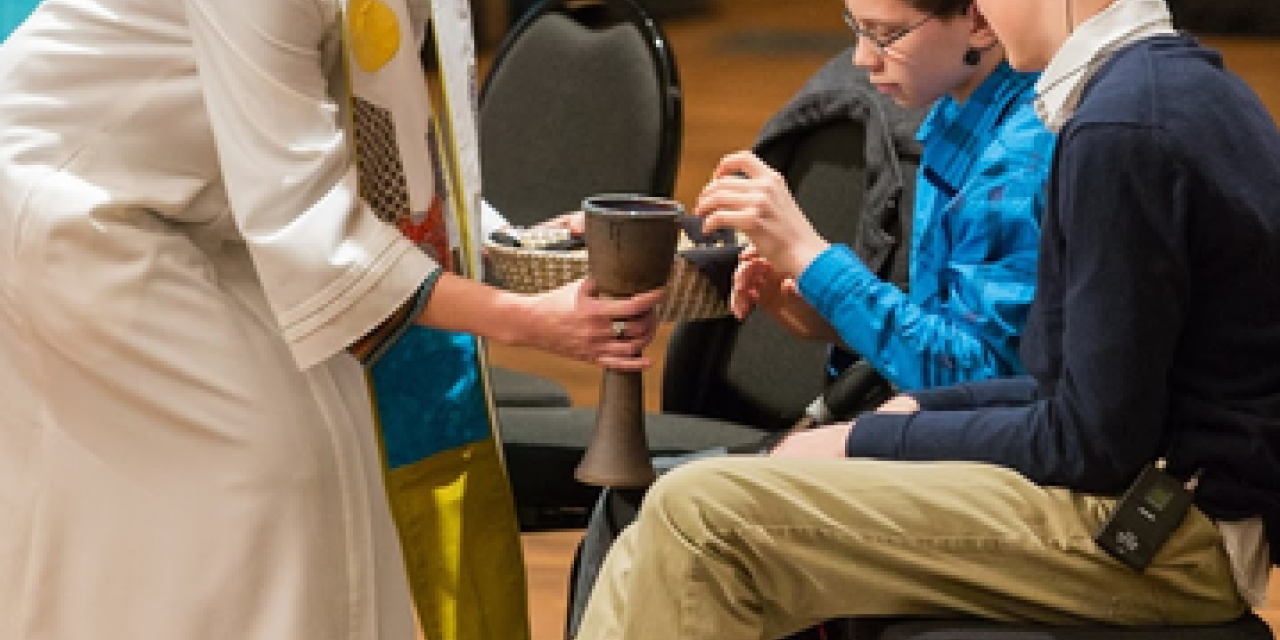“You must be taller than this stick to go on the water slide.” “Do not go in the spa if you are pregnant or have high blood pressure.” Restriction and exclusion signs like these are common in our world. Each of us has been barred from some experience or organization. But what we may not realize is that we—probably unknowingly—have hung “signs” like those on the doors of our church’s small group meeting areas.
Your small group may have this implied “sign” on the door: “To be a member of this small group, you must be able to read, write, speak, and pay attention to spoken words for at least 20 consecutive minutes.” Requirements like these ignore the fact that our congregations and worshiping communities are made up of people with varied abilities and disabilities. Thus we exclude people who live with illiteracy, ADHD, physical disabilities, intellectual differences, and more.
Consider the following ten ideas to help tear down those signs and replace them with one sign: “EVERYONE WELCOME.”
1. Watch your language
When you gather prayer requests, do you ask for prayers for a “wheelchair-bound person” or “a person who is a wheelchair user”? Do you pray for an “invalid” or for “someone with a physical disability”? Words matter. In reality, a person who uses a wheelchair has much freedom of movement, and every child of God is “valid”! Learn more about person first language in order to practice affirming word choices.
2. Provide options for written materials
Instead of assuming that everyone present can read small type, prepare options ahead of time. Provide large-print versions of Bibles and other materials. Make your written materials available online ahead of time so that people can download them to devices that allow for resizing and contrast changes. The web provides options to help craft your PowerPoints and signs.
3. Plan small group worship with all abilities in mind
Allow each person present to participate in the worship conversation with God. Provide multiple sensory options for both input and output. Singing is one way to say “I love you” to God, but people in your group can also sign those words or wave a streamer. Watch this video on Universal Design for Worship.
4. Use curriculum designed with all abilities in mind
The TOGETHER inclusive small group curriculum facilitates community and growth for adults of all abilities. TOGETHER’s innovative, electronic approach uses a wide range of teaching techniques: short video clips interspersed with discussion questions; visual and dramatic Bible passage presentations; and challenging and interactive exercises to help participants apply the lessons to their own lives. Use these materials with all your church’s small groups, or start by offering one inclusive small group.
5. Equip small group leaders to include people of all abilities
Offer training or website links with information on topics such as autism spectrum disorder, mental illness, or building social on-ramps in small groups. Let your volunteers know that you will support and equip them as they create a community that welcomes and values each one present. Here are some tools to get you started:
6. Show moderation in sensations
Some people equate “loud” with fun and excitement. Others equate “loud” with significant pain and a fear of returning to that setting. Each person’s God-designed brain is responsible for interpreting sounds, tastes, smells, sights, touch, and much more. Consider the wide variety of responses as you cue up your guitar player or pianist, prepare a small group event, light candles or incense, or freely distribute hugs. Read more about sensory issues in children’s settings or in worship settings.
7. Do your part
Every individual has a role to play when creating a more inclusive community, from the person purchasing products for the restrooms, to the small group leader, to the fellow small group member who is reacting to an individual with social differences. Check out these role-based tips and find your part.
8. Complete an accessibility audit
Use a guide to evaluate your meeting space as well as your attitudes. Target some specific areas of change. This article on an accessibility audit can get you started.
9. Be ready to make individual modifications
While there are many ways to welcome persons of varied abilities, there will be times when you will want to put together some supports for just one person. Whether that includes an action plan for a group member with a seizure disorder, a specific network of friends for an individual with autism spectrum disorder, or rides to small group meetings and physical support for a person who has experienced a stroke—be watchful for persons who may need that extra plan to better belong within the small group community. Remember to think not only about modifications but also about how this person’s gifts can be used in God’s service within your group and beyond.
10. Don't reinvent the wheel
There are terrific supports already available:
- See the curriculum resources available through TOGETHER.
- Check out the websites of Disability Concerns, Calvin Institute of Christian Worship, and CLC Network. These organizations are ready to support your small group as you seek to create a more inclusive community.
- Research your denomination’s resources. They may have a ministry designed to encourage and equip ministry leaders in their calling. The Christian Reformed Church offers the Faith Formation Ministries team and regional catalyzers to consult with congregations on faith formation matters.

